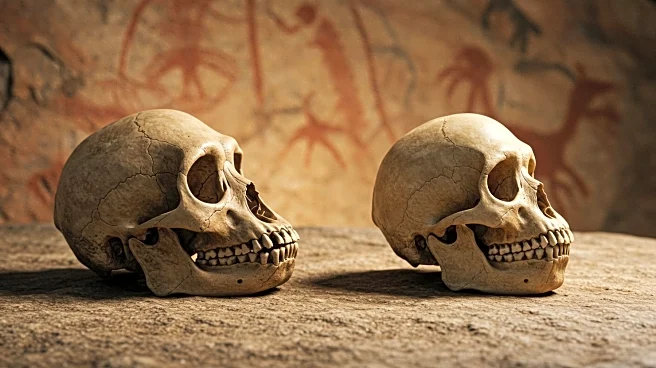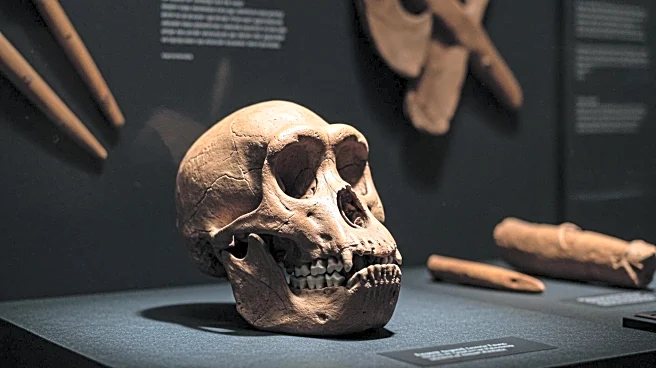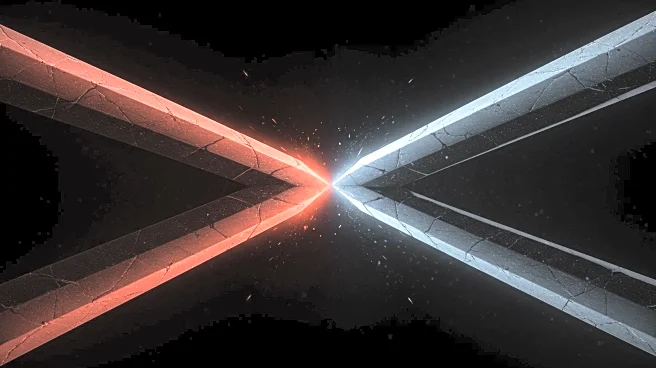What's Happening?
A recent study led by Prof. Israel Hershkovitz of Tel Aviv University has uncovered the oldest physical evidence of interbreeding between Neanderthals and Homo sapiens. The research focused on a 140,000-year-old skeleton of a child found in Israel's Skhul Cave, which was reanalyzed using advanced micro-CT scanning and 3D modeling. The study revealed that the child's skull, while generally resembling Homo sapiens, possesses key Neanderthal features such as the structure of the inner ear and the lower jaw. This discovery predates previous genetic evidence, suggesting that interbreeding occurred much earlier than previously thought, between 60,000 and 40,000 years ago.
Why It's Important?
This discovery significantly alters the timeline of human evolutionary history, indicating that Neanderthals and Homo sapiens began interbreeding much earlier than previously believed. It suggests that Neanderthals were not a separate, competing species but gradually absorbed into the Homo sapiens population. This finding could reshape our understanding of human migration and interaction patterns, particularly in the Middle East, where these populations coexisted. The research highlights the complexity of human evolution and the interconnectedness of ancient populations.
What's Next?
Further research may focus on exploring other regions where Neanderthals and Homo sapiens coexisted to understand the extent and nature of their interactions. Archaeologists and anthropologists might investigate additional fossils to corroborate these findings and refine the timeline of interbreeding. This could lead to new insights into the genetic and cultural exchanges between these ancient populations.
Beyond the Headlines
The discovery raises questions about the social dynamics between Neanderthals and Homo sapiens, including potential cultural exchanges and shared technologies. It also prompts a reevaluation of the role of Neanderthals in human history, challenging the notion of them as a distinct and isolated group.











